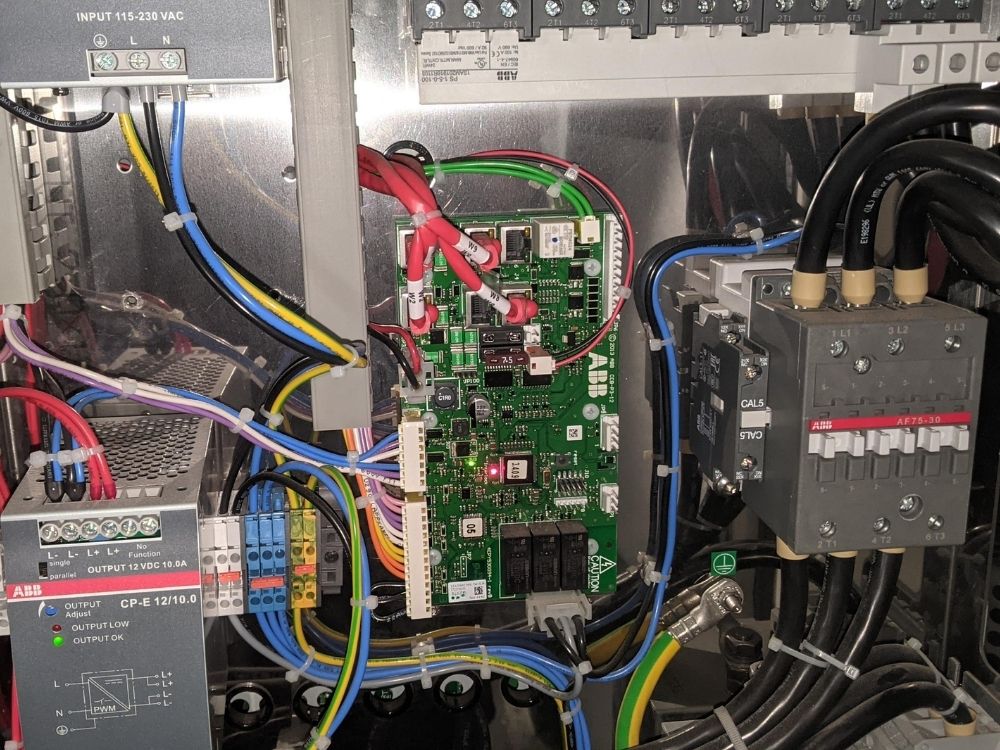By Sherri Haigh
Can you imagine using your car as an energy source for your home or having an electrical problem fixed remotely before you even knew there was an issue?
With the ongoing evolution of technology, how we work, live, and play continues to be transformed, and the work of electrical contractors is evolving with it, impacting consumers in ways they may never have imagined.
As we look to what’s ahead for 2022 and beyond, Mark Marmer, owner of Signature Electric based in Markham, admits he doesn’t have a crystal ball, but he does see some exciting changes ahead that will have a profound effect on customers.
“We are seeing some pretty terrific things coming. Imagine adding power from your car to a building, home or electrical grid,” he said.
Marmer is a member of the Electrical Contractors Association of Ontario, an organization that is a strong advocate for professionalism and high safety and training standards within the industry.
As a leader in Electric Vehicle (EV) installation and planning, Marmer is excited about a project currently underway with Peak Power. Launched in two underground garages, it is an example of how vehicle-to-grid (V2G) technology can work.
“This is what the future holds and how we should be thinking,” said Marmer.
V2G technology connects EVs to bi-directional chargers, which allows them to communicate between the building and the power grid to respond to grid peak events, such as during a summer heatwave where air conditioning demand is at its highest. This creative energy solution can transform buildings from basic electricity consumers to revenue-generating assets for the future smart cities. This V2G technology can allow them to store and discharge electricity generated from renewable sources such as wind and solar. And while monitoring the grid, the system can also operate as a backup distributed energy source providing resiliency benefits to the building.
“We were able to take part in this project by plugging in our Nissan Leaf EV for a few days as part of this exciting demonstration,” said Marmar.

Photo and image above provided by Signature Electric
The economic as well as green energy benefits of this project can be significant, says Marmer, noting that a single EV can mean about $8,000 in electricity savings annually for a Class A building by shaving the building’s top 5 highest peak demand events for the year, effectively removing the building’s Global Adjustment fees from their hydro bill.
Marmer predicts that sophistication and evolution of technology will continue to make it easier for electrical contractors to better anticipate and address electrical issues with current customers.
“I’ll be able to look at the algorithms and see there is a problem with the EV charging system and potentially fix it right away as opposed to sending a truck,” he suggests.
The “smart technology” will mean faster and better service and allow contractors to anticipate and prevent problems in buildings, ensuring uninterrupted service, he says.
“The most important thing for the public is reliability,” he says. Just as people expect the pump to work at a gas station, they expect the same from their EV charger.
Even in his day-to-day work, technology has changed the way customers can interact with his company, and he admits to being surprised by how quickly some are embracing it.
“I admit I was very skeptical about the Live Chat feature. I mean, really, who wants to chat online with their electrical contractor,” he laughed.
But according to Marmer, it is now in use daily. Customers can request service through an automated chatbot which immediately directs them to the correct department, creating a service ticket and, if needed, updating their address.
Whether it is something as simple as speeding up service or expanding on smart grid innovation, Marmer is very excited about what the future holds for his industry and customers.
Consumers can find a list of ECAO contractors who have electricians who are certified EVITP installers at netco.org/evitp-installers.
Related Reading:
Plan Early To Achieve Successful Projects Advises Electrical Contractor
Planning Key for Electric Car Charging Stations
EV Charging: Understanding Installation Complexity
